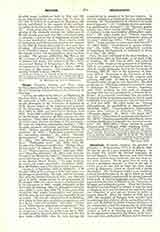

Mezger, FRANCIS, JOSEPH, AND PAUL, three brothers, learned Benedictines of the monastery of St. Peter in Salzburg, and professors at the University of Salzburg.
FRANCIS, the oldest of the three, b. at Ingolstadt, October 25, 1632; d. at Salzburg, December 11, 1701. He took vows in 1651; was ordained priest in 1657; taught philosophy at the University of Salzburg in 1659; became regent of the convictus and secretary of the university in 1661; taught philosophy again from 1663 to 1665; and then moral theology until 1668. From 1669 to 1688 he taught various branches at the Bavarian monastery of Ettal and at his own monastery. From 1688 until his death he was master of novices and director of clerics at his monastery. He wrote the following philosophical treatises: “Philosophia rationalis rationibus explicata” (Salzburg, 1660); “Anima rationibus philosophicis animata et explicata” (ib., 1661); “Philosophia naturalis rationibus naturalibus elucidata” (ib., 1661); “Manuale philosophicum” (ib., 1665); “Homomicrocosmus” (ib., 1665). The following are some of his translations: “Philosophia sacra” (ib., 1678), from the French of the Parisian Capuchin Ivo; “Heiliges Benediktiner-Jahr” (2 volumes, Munich, 1690), from the Latin; “Dioptra politices religiose” (Salzburg, 1694), and “Exercitia spiritualia” (ib., 1693), both from the French of the Maurist Le Contat; “Succinct meditations christiane” (4 vols., ib., 1695), from the French of the Maurist Claude Martin; “Via regia studios juventutis ad veram sapientiam” (Frankfort, 1699), from the Italian; and a few others of less importance. JOSEPH, b. September 5, 1635, at Eichstadt; d. October 26, 1683, at the monastery of St. Gall, while on a pilgrimage to Einsiedeln. He took vows at the same time with his brother Francis in 1651; was ordained priest in 1659; taught poetry in the gymnasium of Salzburg in 1660; was master of novices and subprior in his monastery in 1661; taught philosophy at the University of Salzburg, 1662-4; apologetics and polemics, 1665-7; canon law, 1668-73; he was prior of his monastery and taught hermeneutics and polemics, 1673-8, when he was appointed vice-chancellor of the university. He was an intimate friend of Mabillon, with whom he kept up a constant correspondence and who in his “Iter Germanieum” calls him “Universitatis Salisburgensis praecipuum ornamentum” (Vetera Analecta, I, xi). His chief work is “Historia Salisburgensis” covering the period from 582 to 1687, of which work he, however, had written only the first four books (582-1555) when he died, leaving the remainder to be completed by his two brothers. In 1664 he published at Salzburg his four philosophical treatises: (I) “Considerationes de scientiis et de modis sciendi in genre”; (2) “Axiomata physics quaestionibus problematicis distincta”; (3) “Quatuor gradus naturae: esse, vivere, sentire, intelligere”; (4) “Unitas et distinctio rerum quaestionibus philosophicis explicata”. His other works are: “Tabula bipartita successionis ecclesiasticae tam ex testamento quam ab intestato” (Salzburg, 1670); “Panacaea juris” (ib., 1673); “Lapis mysticus et cornu parvulum Danielis” (ib., 1677, 1682); “Institutiones in sacram scripturam” (ib., 1680); “Assertio antiquitatis ecclesiae metropolitanae Salisburgensis et monasterii S. Petri, O. S. Ben.” (ib., 1682).
PAUL, the most celebrated of the three brothers, b. November 23, 1637, at Eichstadt; d. April 12, 1702, at Salzburg. He took vows in 1653; was ordained priest in 1660; taught at the gymnasium of Salzburg, 1660-4; was master of novices and director of clerics, 1664-6; taught philosophy, first at the University of Salzburg, 1668-70; then at the monastery of Gottweig, 1671-2. Returning to the University of Salzburg, he taught theology, 1673-88; exegesis and polemics, 1689-1700. In 1683 he had succeeded his deceased brother Joseph as vice-chancellor. His chief production is: “Theologia scholastica secundum viam et doctrinam D. Thomae” (4 volumes, Augsburg, 1695, 1719), probably the best work on dogmatic theology that has been produced by a German Benedictine. It is especially noteworthy that the author’s treatment of the immaculate conception and of papal infallibility is in exact accordance with the definitions of 1854 and 1870. His other works are: “Somnia philosophorum de possibilibus et impossibilibus” (Salzburg, 1670); “Contemplations philosophicae magnae urbis caelestis et elementaris” (ib., 1670); “Mercurius logicus” (ib., 1671); “De gratia Dei” (ib., 1675); “Allocutiones de mediis pietatis Marianne” (ib., 1677); “Orations parthenine, miscellaneae, sacroprofane, problemata inauguralia seu orations academic” (ib., 1699-1700); “Sacra historia de gentis hebraicae ortu” (Dillingen, 1700; Augsburg, 1715).
MICHAEL OTT

